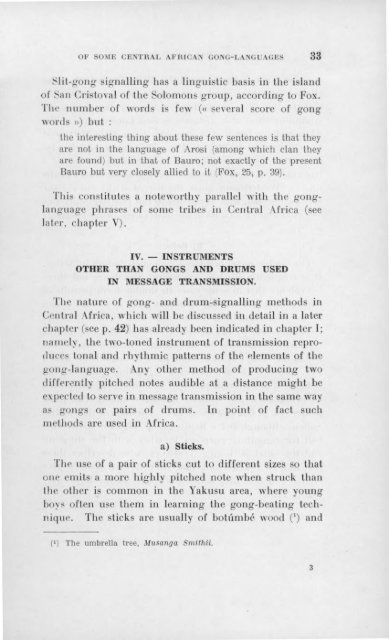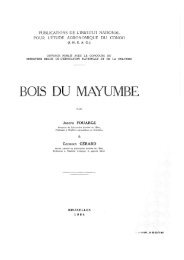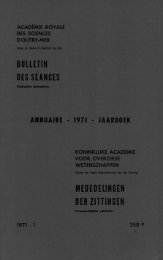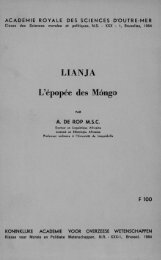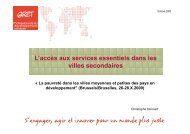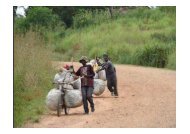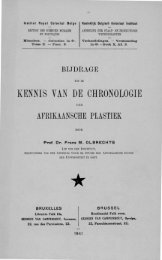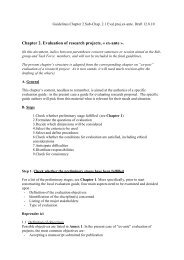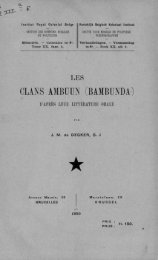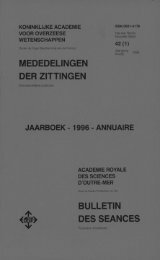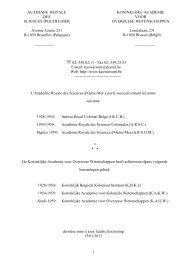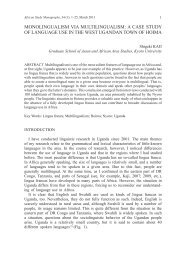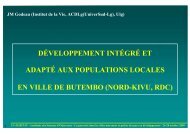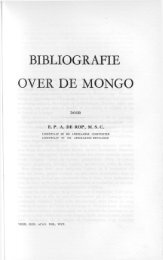CENTRAL AFRICAN GONG-LANGUAGES
CENTRAL AFRICAN GONG-LANGUAGES
CENTRAL AFRICAN GONG-LANGUAGES
- No tags were found...
You also want an ePaper? Increase the reach of your titles
YUMPU automatically turns print PDFs into web optimized ePapers that Google loves.
OF SOME C E N T R A L A F R IC A N <strong>GONG</strong>-<strong>LANGUAGES</strong> 33Slit-gong signalling lias a linguistic basis in tbe islandof San Cristoval of the Solomons group, according to Fox.The number of words is few (« several score of gongwords ») but :the interesting thing about these few sentences is that theyare not in the language of Arosi (among which clan theyare found) but in that of Bauro; not exactly of the presentBauro but very closely allied to it (Fox, 25, p. 39).Tliis constitutes a noteworthy parallel with the gonglanguagephrases of some tribes in Central Africa (seelater, chapter V).IV.— INSTRUMENTSOTHER THAN <strong>GONG</strong>S AND DRUMS USEDIN MESSAGE TRANSMISSION.The nature of gong- and drum-signalling methods inCentral Africa, which will be discussed in detail in a laterchapter (see p. 42) has already been indicated in chapter I;namely, the two-toned instrument of transmission reproducestonal and rhythmic patterns of the éléments of thegong-language. Any other method of producing twodifferently pitched notes audible at a distance might beexpected to serve in message transmission in the same wayas gongs or pairs of drums, ln point of fact suchmethods are used in Africa.a) Sticks.The use of a pair of sticks eut to different sizes so thatone emits a more highly pitched note when struck thanthe other is common in the Yakusu area, where youngboys often use them in learning the gong-beating technique.The sticks are usually of botümbé wood (l) and(‘ ) The um brella tree, M usanga S m ithii.3


